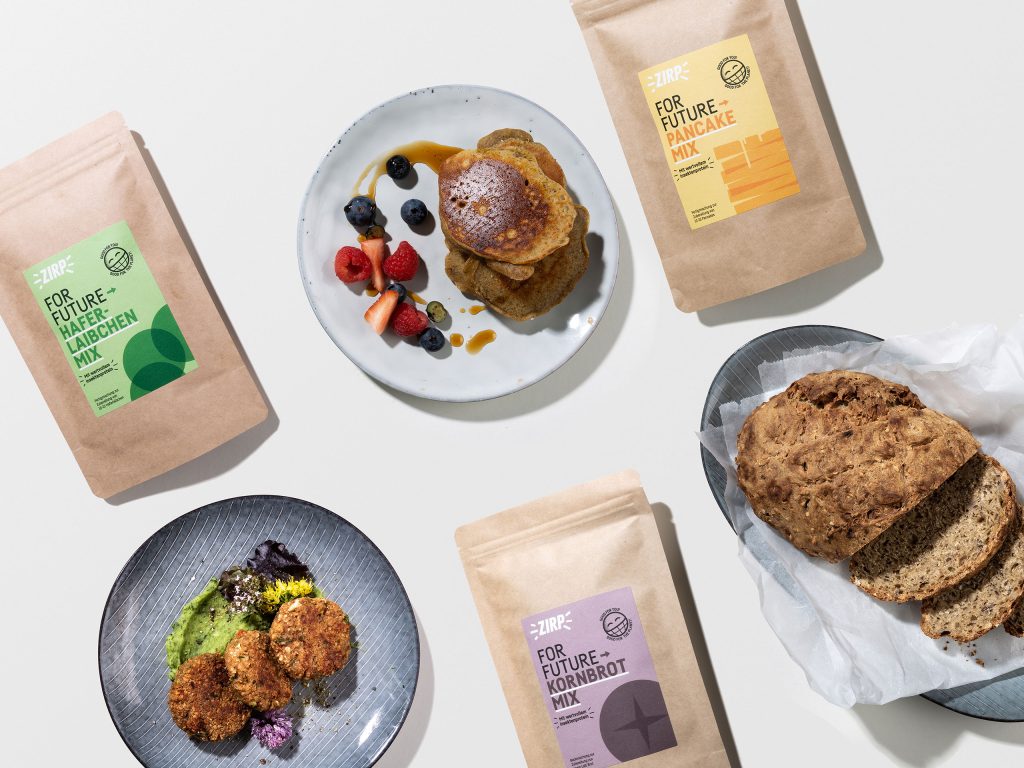
They stand for a balanced, sustainable diet whose guiding principle is not sacrifice. They are driven by curiosity. They are not afraid of food tech innovations or unusual ingredients or foods – on the contrary, they are driven by curiosity to try out new and different things. They are the avant-garde that is putting our food culture to the test and driving it forward. In future, it will be about a responsible food culture that also includes the health of the planet. Responsibility and diversity are their maxims, with which they will drive future developments in gastronomy, agriculture and the food industry and break up the patterns of our eating habits.
Insects are not only extremely resource-efficient farm animals, but also very nutritious. Insects contain high-quality protein, a high proportion of unsaturated fatty acids, vitamins and minerals such as copper, iron, magnesium, manganese, selenium and zinc. Those who shy away from cooking or processing insects can use existing ready-made products.
The Viennese company Zirp Insects wants to change people's minds and has launched various ready meals and baking mixes for an easy introduction to the world of insects: soup, falafel, risotto, oat loaf, bread baking mix as well as brownies and pancakes. The insects were completely processed into flour. It pays to try! The products taste delicious and help to make the world more sustainable.
The Protein Brewery, an innovative developer of protein-rich food ingredients, is taking the next step to contribute to a more sustainable world and a solution for feeding a growing world population. At its site in Breda in the Netherlands, The Protein Brewery has built a pilot plant for plant-based protein, equipped with a complete industrial line. The Protein Brewery uses innovative fermentation technologies to produce food proteins that can replace animals in the food chain.
The company's main product is Fermotein™, a food ingredient with excellent nutritional value. The use of very little land and water contributes to a very sustainable profile. Fermotein™ can be produced from a variety of globally available crops such as cassava, corn, potatoes, sugar cane and sugar beet, resulting in local, scalable and efficient processes worldwide.
Whether meat and fish, pasta or cookies: food printing can be used to produce food quickly, cost-effectively and in a way that conserves resources. Innovative 3D printers are used instead of traditional manufacturing processes. Food printing has immense potential. Food that contains animal ingredients in conventional production can now be produced on a purely plant-based basis (and therefore without climate-damaging emissions) with the help of bio-printing.

Imola is much more than just a race track: the city combines top-class cuisine, cultural monuments, and traditional producers to create an experience that delights connoisseurs, Italy fans, and curious travelers alike. From 2-star gastronomy at Ristorante San Domenico to creative pizza experiences and slow food osterie to historic libraries, palazzi, and award-winning wineries: this guide shows you the best places for cuisine, culture, and shopping—authentic, high-quality, and with real added value for your next visit to Imola.
The two-star Berlin restaurant Horváth returns to Vienna in early 2026 with an exclusive pop-up, presenting an uncompromising new menu based on “emancipated vegetable cuisine.” For two weeks, Sebastian and Jeannine Frank’s team will take over the Herzig restaurant and serve a 7-course menu that shows how innovative, precise, and luxurious vegetables can be today. A culinary highlight for foodies, fine dining fans, and anyone who doesn’t want to miss Austria’s most exciting pop-up experience of 2026.
This time, Sebastian Frank is taking an even more uncompromising approach, with a new menu and a clear message: vegetables can be luxurious – even without caviar.
With the opening of its new distillery in Mosbach, Aromahopping is sending a strong signal about the future of artisanal spirits. Between extraordinary gin compositions, creative tastings, and a high-caliber supporting program, it became clear what makes the Odenwald brand so special: attention to detail, curiosity about new flavors, and a passion for honest craftsmanship.


They stand for a balanced, sustainable diet whose guiding principle is not sacrifice. They are driven by curiosity. They are not afraid of food tech innovations or unusual ingredients or foods – on the contrary, they are driven by curiosity to try out new and different things. They are the avant-garde that is putting our food culture to the test and driving it forward. In future, it will be about a responsible food culture that also includes the health of the planet. Responsibility and diversity are their maxims, with which they will drive future developments in gastronomy, agriculture and the food industry and break up the patterns of our eating habits.